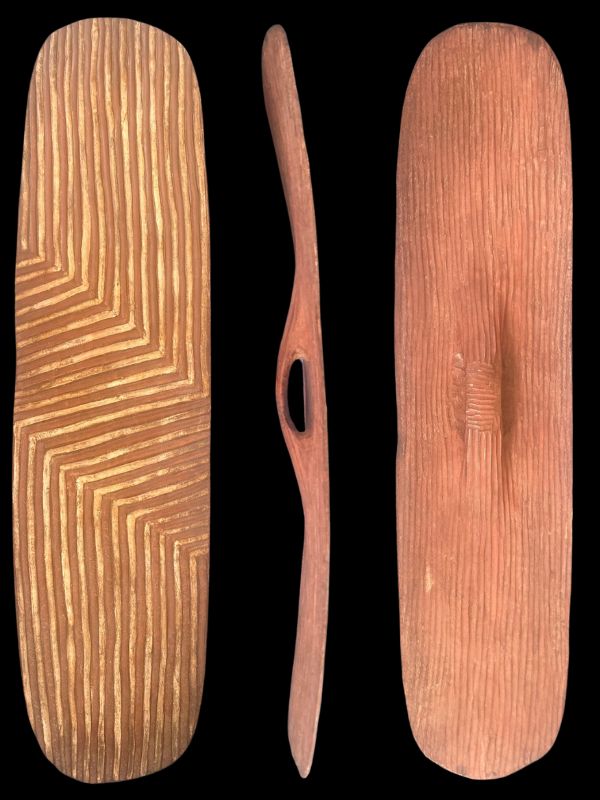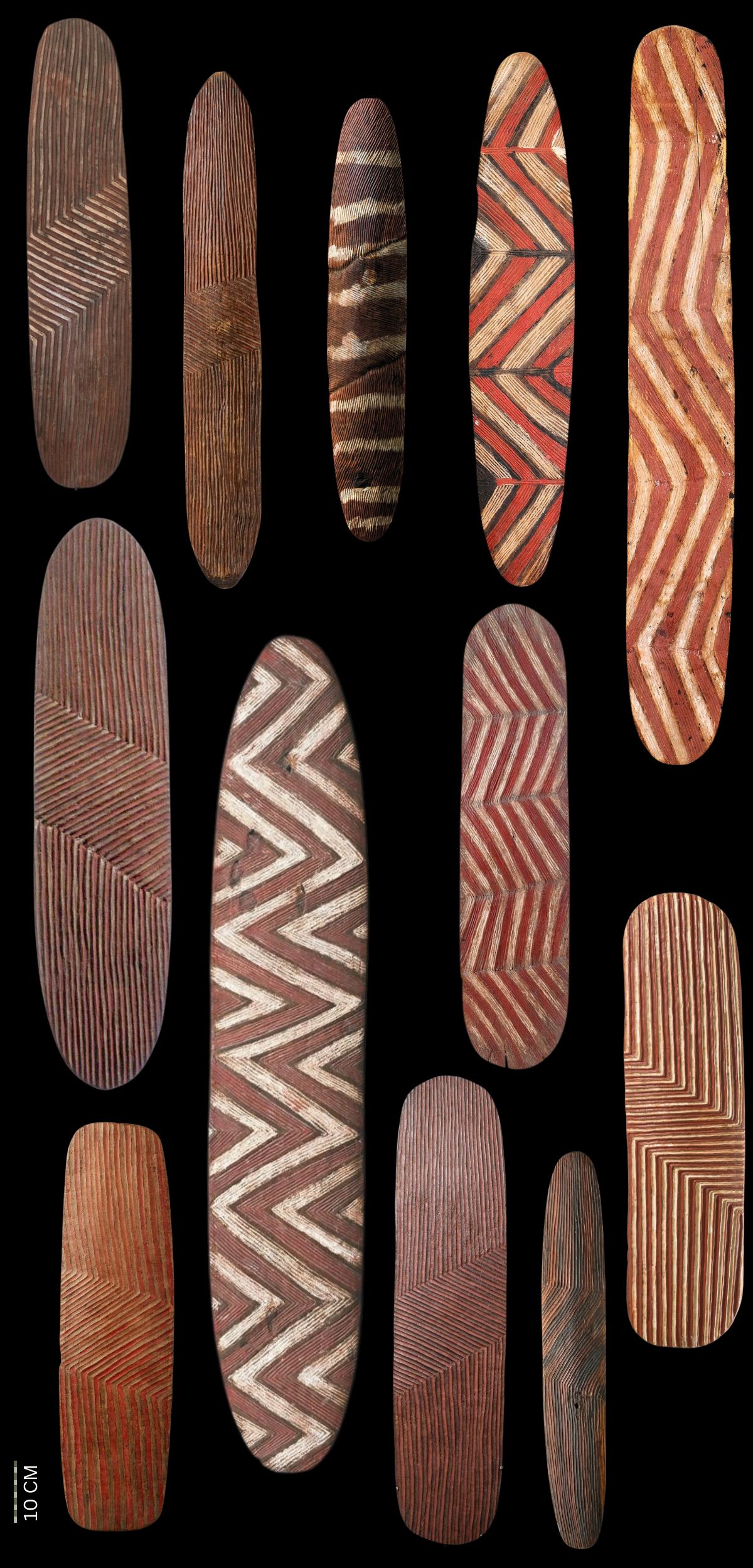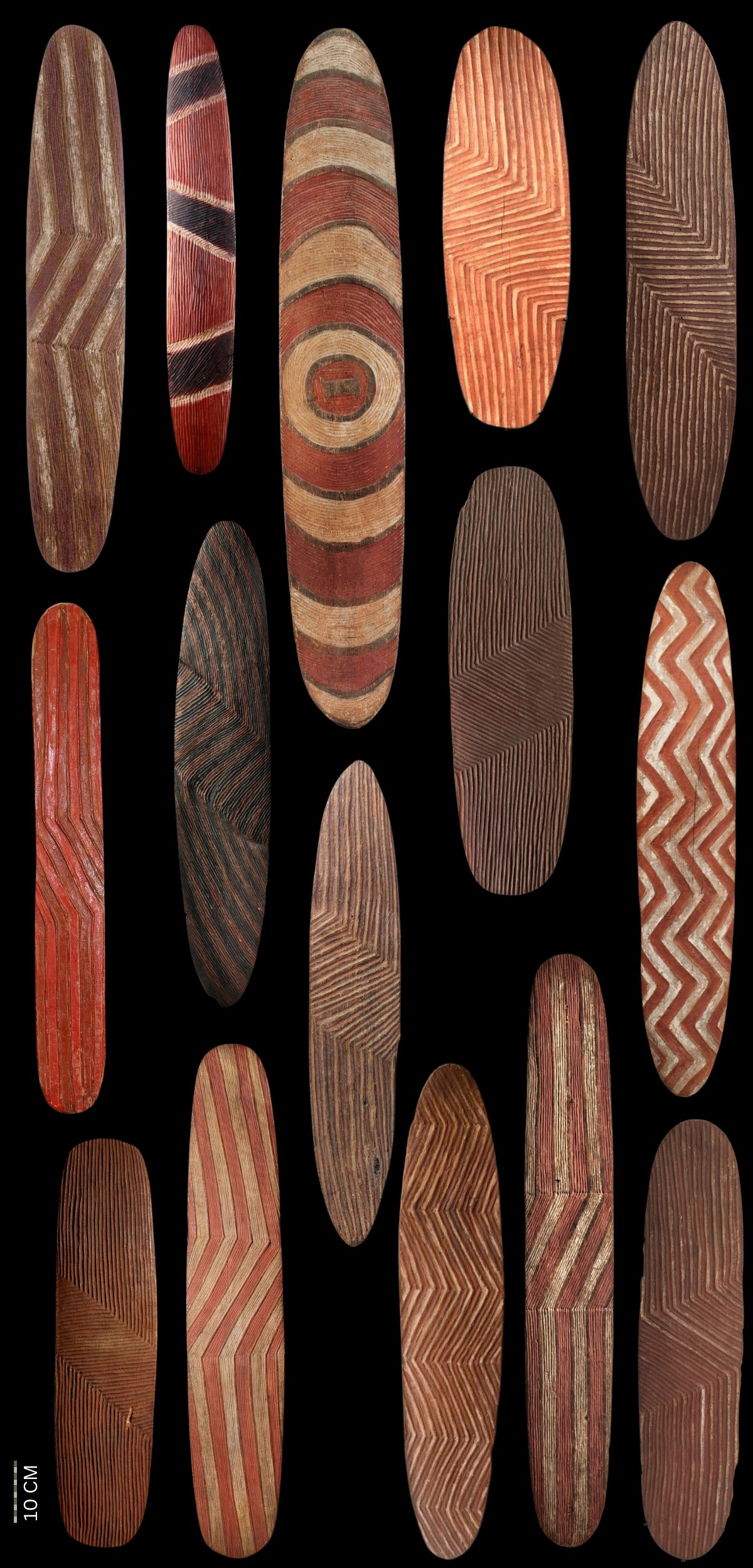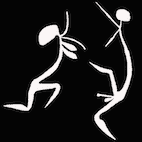Aboriginal Wunda Shield
Guide to Wunda Shields
Wunda shield, a renowned Aboriginal cultural artifact, typically measure between 65 cm and 90 cm in length, although exceptional examples exceeding a meter are occasionally found. During the 1960s, many Wunda shields were crafted by Aboriginal people for sale through mission stores and along the road between Perth and Adelaide. Today, collectors and art enthusiasts seek older, Wunda shields, with authentic, traditional use.
If you have a Wunda Shield also known as a Wanda shield please feel free to send me images via email of the front, back and side profile of the handle along with the size.
The Wunda shield stands out as the most widely distributed Aboriginal shield in Australia. Crafted primarily from medium-density native woods such as Hakea ioria or Brachychiton gregorii, the name “Wunda” originates from the Paljgu language term wurnda, which referred both to the shield itself and the type of wood used in its construction.
.

What Makes a Good Wunda Shield?
When looking for a high-quality Wunda shield, it’s essential to consider the material, design, and condition. Authentic Wunda shields made for Indigenous use are thin, lightweight, and typically crafted from either dark hardwoods or lighter, softer woods. The hardwood variants are generally more popular and command higher value. These shields have a distinct slightly curved profile, and the older, well-preserved examples are the most sought after. Due to their thinness, Wunda shields are susceptible to damage, which can affect their value. Finding a perfect, undamaged Wunda shield is rare and prized among collectors.
Key Features of a Wunda Shield
- Symmetry: The best Wunda shields are symmetrical, with the top and bottom halves being of equal size. Asymmetry often indicates past damage, and many older shields have been reworked by Indigenous peoples, with damaged parts removed to restore the shape.
- Handle: The handle should be large enough for a hand to fit comfortably through, often flowing naturally from the shield’s back. The condition of the handle can often provide the best insight into the shield’s age and quality. Older Wunda shields often feature grooved designs on both the front and the back, but with distinct differences in the patterns.


Two Types of Wunda Shield Designs
Wunda shields are typically decorated with two primary design layouts:
- Pandal: This design features vertical lines in the upper and lower sections of the shield, while the central section displays oblique lines.
- Pangkurda: In contrast, the lines in the upper and lower sections of this design are oblique, with horizontal lines running across the center.
Both designs are known for their striking zigzag motifs, often associated with rain, water, and natural elements. These patterns are interpreted as representing ripple marks on sand, floodwaters, or the wind’s ripples on large bodies of water.
Distribution of Wunda Shields
Wunda shields, embellished with bold zigzag patterns and red ochre Black charcoal and white pipe clay, were historically used across Western Australia. These shields were primarily produced by Aboriginal groups living between the Gascoyne and Murchison rivers. They were traded extensively through a vast network of inland exchange routes.
Wunda Shield Uses
Wunda shields were designed for protection during combat, particularly against projectile weapons like spears and boomerangs. In addition to their practical use in battle, Wunda shields also held cultural and ceremonial significance. They were often carried by performers in rituals, reenacting episodes from the Dreaming, the primordial creation period, where ancestral beings were armed with shields. Occasionally, shields were used for practical purposes, such as digging or starting fires, although this was rare and only in extreme circumstances.
Wunda Shields: A Ceremonial trade item
Originally produced in the region between the Gascoyne and Murchison rivers in Western Australia, the Wunda shield’s spread across Western, Northern, and Southern Australia as a highly sought-after trade item. According to researcher Kim Akerman, this widespread distribution reflects its importance in Indigenous trade networks, rather than being a product of multiple, unrelated Aboriginal communities.
Functionally, Wunda shields were highly effective as defensive weapons, used to block spears and boomerangs during combat. Beyond their practical use, these shields were also deeply integrated into Indigenous economies and spiritual practices. They were often exchanged across vast distances—reaching as far east as Ooldea in South Australia and north to the Kimberley region—demonstrating their extensive reach and high demand.
Some Wunda shields were created as ceremonial objects, intended for single-use in rituals and ceremonies.
The broad dissemination of the Wunda shield also mirrors the pathways of spiritual movements and ceremonial traditions that traveled across Australia, linking geographically distant Aboriginal groups. This pattern of cultural diffusion is similar to that of fluted beanwood shields found in Central Australia, which have also been adopted by various communities throughout Western Australia over the past century.
Identifying Older Wunda Shields vs. Tourist Versions
After the 1960’s, many Wunda shields were made for sale to tourists, which are significantly less valuable than older, used shields. These newer shields often feature smaller, less intricately carved handles and may have lighter wood at the edges, indicating they were made from smaller trees. In contrast, older Wunda shields have distinctive, well-carved handles and carved from heart wood.
While some shields from the Kimberley region feature similar zigzag motifs, they are usually thicker and less refined than true Wunda shields, which are known for their elegance and thin profile.
Conclusion: The Value of Authentic Wunda Shields
For collectors and enthusiasts, Wunda shields are more than just artworks—they are cultural treasures. Older shields, especially those with clear signs of traditional use, are valued. Whether you’re interested in their history, craftsmanship, or cultural significance, understanding what to look for in a Wunda shield can help you identify and appreciate this iconic Aboriginal artifact.
All images in this article are for educational purposes only.
This site may contain copyrighted material the use of which was not specified by the copyright owner.
Further reading
